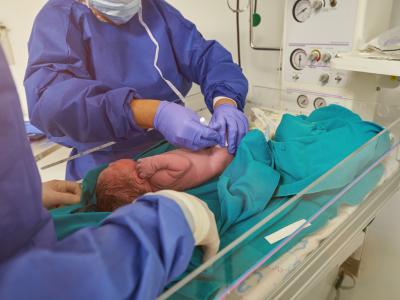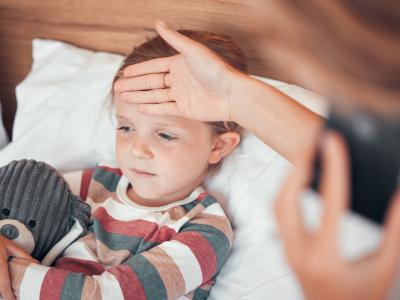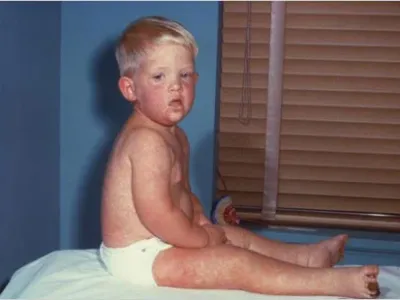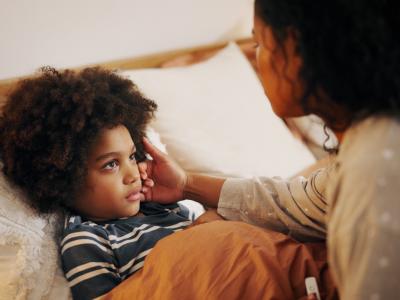CDC ends investigation into sprout-linked E coli outbreak that sickened 51
The Centers for Disease Control and Prevention (CDC) said in an update yesterday that it has concluded its investigation into a 10-state outbreak of Escherichia coli linked to contaminated clover sprouts that sickened 51 people, up 12 from the agency's Mar 19 update.
CDC traced the outbreak to a seed lot that supplied Chicago Indoor Garden, which recalled all products containing red clover sprouts on Mar 16. The same seed lot was the source of a 2019 outbreak of the same strain of E coli from clover sprouts.
Eighteen of 32 people interviewed by the CDC (56%) reported eating sprouts in the week before their illness. No outbreak-related deaths occurred, but three people were hospitalized. Patients' symptoms began from Jan 6 to Mar 15.
The CDC said that, while the outbreak appears to be over, "raw and lightly cooked sprouts are a known source of foodborne illness. CDC recommends that consumers, restaurants, and other retailers always follow food safety practices to avoid illness from eating sprouts."
These measures include cooking sprouts thoroughly, asking that raw sprouts not be added to restaurant food, checking sandwiches and salads to be sure they don't contain raw sprouts, and avoiding raw sprouts of any kind in children, older adults, pregnant women, and people with compromised immune systems.
The CDC advises retailers to buy sprouts from growers that follow the Food and Drug Administration Sprouts Guidance.
Apr 22 CDC update
Mar 20 CIDRAP news scan
Mar 19 CDC food safety alert
WHO: 6 recent DRC Ebola cases tied to persistent virus source
The World Health Organization (WHO) today posted an update on the six new Ebola cases reported since Apr 10 in the Democratic Republic of the Congo (DRC) outbreak, all in Beni, noting that all seem to be linked to earlier transmission and that features of some of the cases pose a high risk of community spread.
Of the newly confirmed patients, four died, including two in the community, which raises the risk of wider spread. Of the three newest cases, two were registered as contacts, but none were regularly followed because of insecurity challenges and community resistance.
One of the two patients who is still alive is receiving care in an Ebola treatment center. The other is still in the community, and response teams are working with residents to bring him or her to an Ebola treatment center for care and to prevent further transmission.
For the recent cases, 762 contacts have been identified, and 602 (79%) are being monitored. Genetic analysis of samples from the six patients shows a link to cases that were confirmed in July 2019, suggesting a persistent infection source, such as direct contact with the body fluids of a survivor.
So far, 3,461 cases have been reported in the DRC's outbreak, 2,279 of them fatal. The WHO has asked donors for $20 million to keep the outbreak response going through early May.
Apr 23 WHO outbreak update
WHO says immunization gains could be lost in light of COVID-19
The WHO warned today in a separate report that shutting down immunization campaigns and routine services in light of the COVID-19 pandemic could increase the risk of vaccine-preventable outbreaks.
"Disease outbreaks must not remain a threat when we have safe and effective vaccines to protect us," said Tedros Adhanom Ghebreyesus, PhD, WHO director-general. "While the world strives to develop a new vaccine for COVID-19 at record speed, we must not risk losing the fight to protect everyone, everywhere against vaccine-preventable diseases. These diseases will come roaring back if we do not vaccinate."
Measles, polio, diphtheria, and yellow fever are the top concerns for WHO officials, who worry COVID-19 may disrupt immunizations services or prevent parents from seeking routine childhood immunizations. To illustrate this fear, the WHO said a deadly measles outbreak last year in the DRC was made worse by that country's ongoing battle against an Ebola outbreak (see previous scan).
Currently, the WHO recommends a temporary pause of preventive immunization campaigns where there is no active outbreak of a vaccine-preventable disease.
Apr 23 WHO news release
WHO warns COVID-19 burden could boost African malaria deaths
With countries in sub-Saharan Africa accounting for a small but increasing proportion of global COVID-19 cases, countries have a critical window of opportunity take steps to minimize disruptions in malaria prevention and treatment services, the WHO said today in yet another report.
It urged countries to move fast and distribute insect-treated nets and antimalaria medications and do their best to maintain those essential control services. The WHO warned that severe disruptions could double malaria deaths compared with 2018.
In making its recommendations, the group looked at nine different pandemic-related disruption scenarios for 41 countries to estimate potential increases in cases and deaths. The worst-case scenario, which involved the suspension of insecticide-treated net campaigns and a 75% cut in access to malaria medications, estimated that deaths this year could reach 760,000, double that of 2018. "This would represent a return to mortality levels last seen 20 years ago."
The WHO also advises speeding up mass vector control campaigns and commended Benin, the DRC, Sierra Leone, and Chad for starting their bed net campaigns during the pandemic.
Apr 23 WHO statement
Monoclonal antibody may enhance anthrax vaccine protection, study finds
A phase 4 study has discovered that co-administration of the monoclonal antibody raxibacumab with Anthrax Vaccine Adsorbed (AVA) does not negatively affect AVA immunogenicity, suggesting that combining the two might provide added benefit in people who may have inhaled spores containing Bacillus anthracis.
In the noninferiority study, published yesterday in The Lancet Infectious Diseases, researchers randomly assigned 573 healthy volunteers 18 to 65 years old in a 1:1 ratio to receive either 0.5 microliters (mL) subcutaneous AVA on days 1, 15, and 29 or a 40 milligrams per kilogram intravenous infusion of raxibacumab right before AVA on day 1, followed by AVA only on days 15 and 29 at three US centers from Feb 24, 2015, to Jun 6, 2017.
They found that the geometric mean concentration (GMC) of anti-protective antigen antibodies was 26.5 micrograms (μg)/mL (95% confidence interval [CI], 23.6 to 29.8) in the 276 participants given only AVA versus 22.5 μg/mL (95% CI, 20.1 to 25.1) in the 269 given AVA plus raxibacumab.
The between-group ratio was 1.18 (90% CI, 1·03 to 1·35; P = 0·0019), which met the defined noninferiority margin and supports the hypothesis that the addition of raxibacumab doesn't undermine the vaccine's efficacy. Adverse event rates in the two groups were similar, at 87 (30%) of 286 in the AVA group versus 80 (29%) of 280 in the AVA-plus-raxibacumab group; no serious adverse events were reported.
In a commentary in the same journal, Michael Norris, PhD, and Jason Blackburn, PhD, of the University of Florida in Gainesville, said that raxibacumab "is an effective, safe, and valuable addition to the current AVA vaccination regimen for anthrax post-exposure prophylaxis, with the capacity to substantially reduce morbidity and mortality of human infection," noting that its efficacy against anthrax caused by new and diverse forms of anthrax pathogens is unknown.
The study was sponsored by the US Biomedical Advanced Research and Development Authority (BARDA) and GlaxoSmithKline, which produced raxibacumab until it sold the drug to Emergent BioSolutions in 2017.
Apr 22 Lancet Infect Dis abstract and commentary












